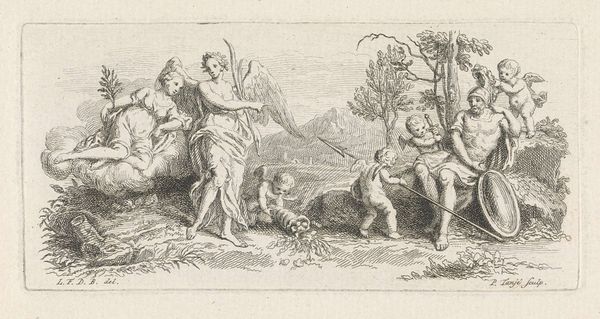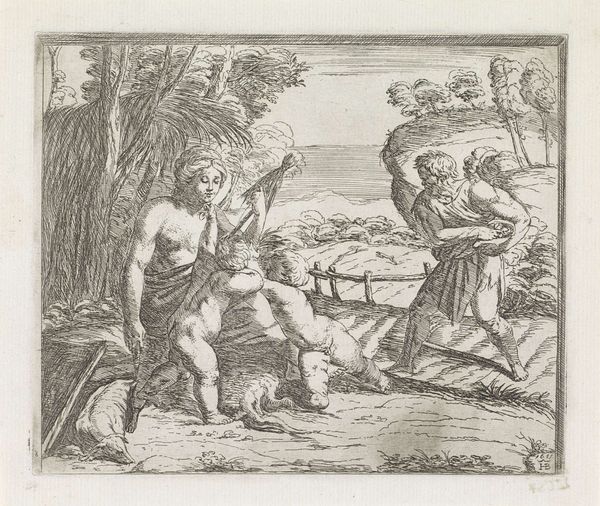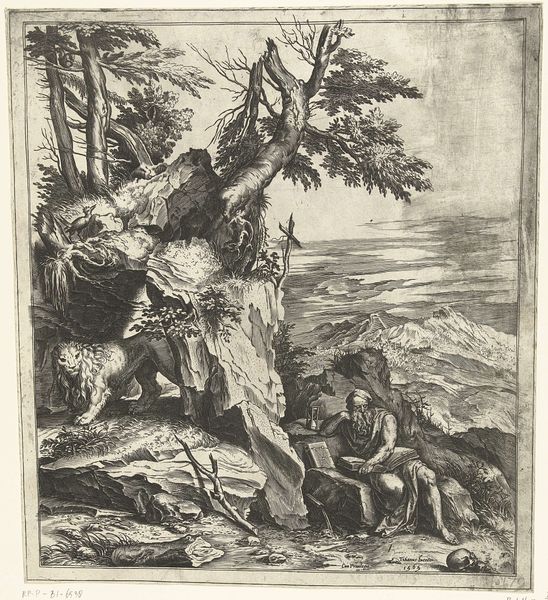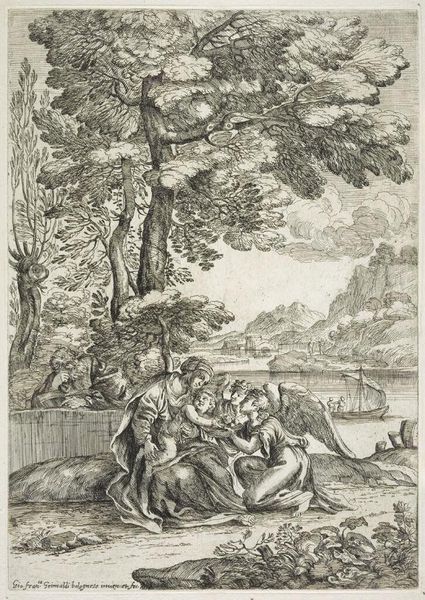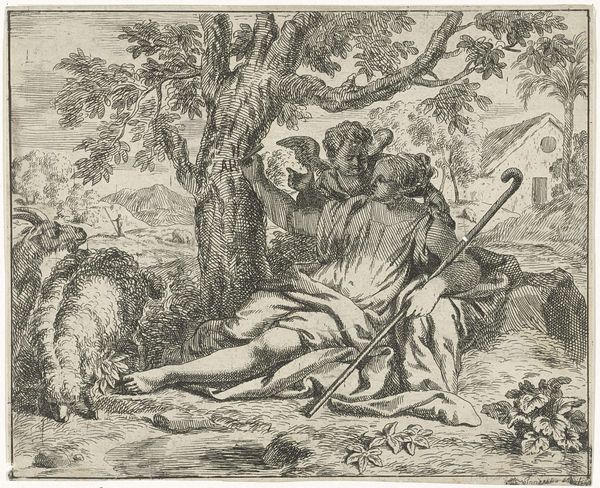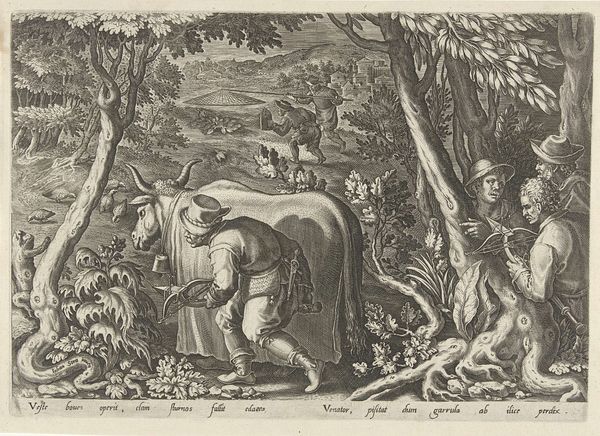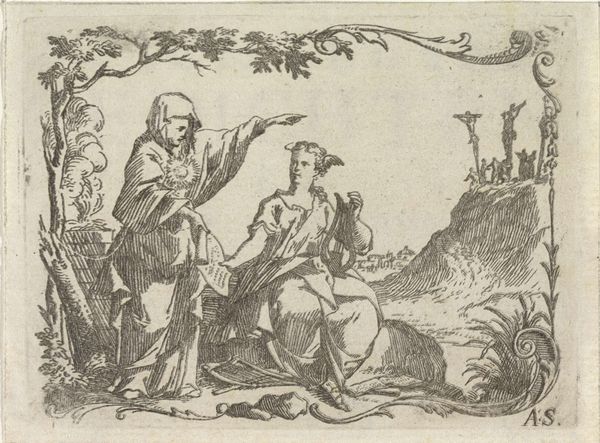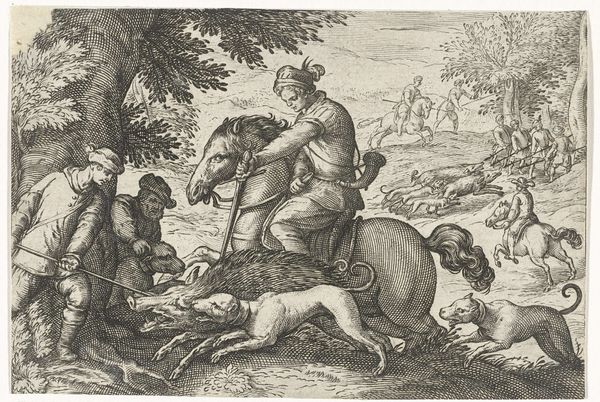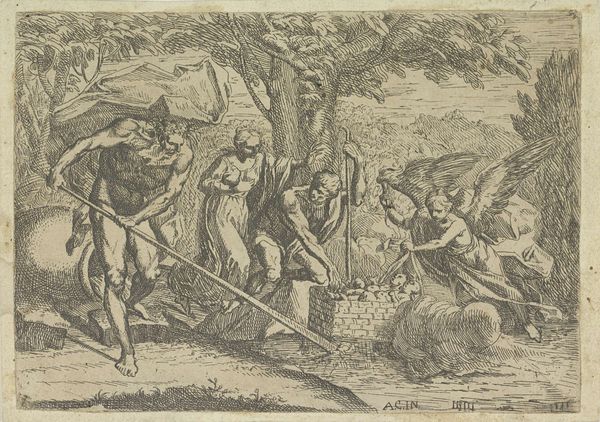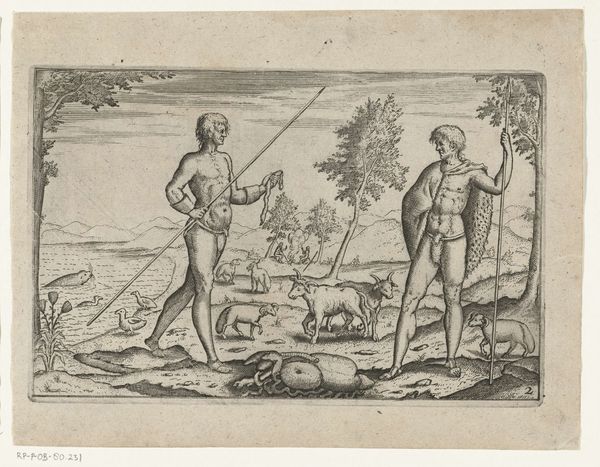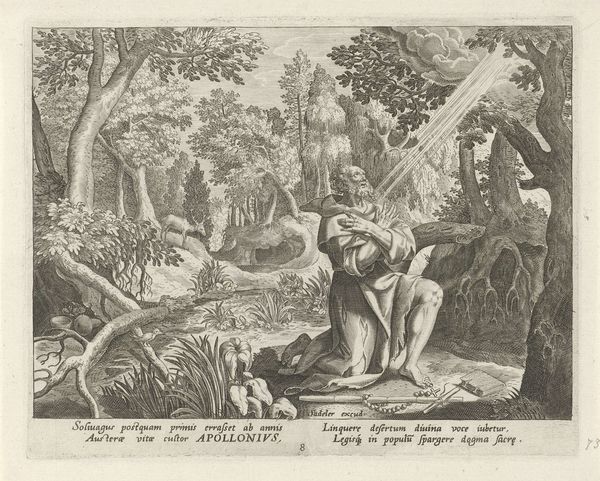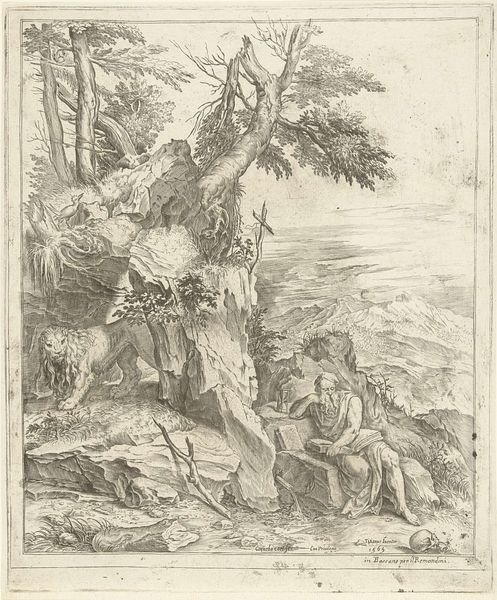
engraving
#
baroque
#
landscape
#
figuration
#
engraving
Dimensions: width 252 mm, height 226 mm
Copyright: Rijks Museum: Open Domain
Curator: Here we have Valentin Lefebvre’s "Musicerend gezelschap in de buitenlucht" from 1682, an engraving depicting figures making music in a pastoral landscape. It looks rather idyllic at first glance, doesn't it? Editor: I find it strangely melancholic. The figures seem isolated, despite being together. The scratchy lines of the engraving, the muted tones—it all contributes to a sense of longing. Is this escapism or a critique of something deeper? Curator: Well, Lefebvre was known for his engravings, and the process itself involved meticulously carving lines into a metal plate, which were then inked and printed. There's a tangible labor involved. It prompts me to consider the artist's own social and economic standing and how that might affect the viewing or collecting of such an image. Consider, too, the economics that brought this work into existence, which likely circulated among a certain social sphere. Editor: Precisely. This engraving certainly participates in, but could also be gently questioning, the Baroque era's obsession with idealized rural life and courtly love. I am thinking about its relationship to the larger issues of class, patronage, and perhaps the beginnings of capitalism in Dutch society. Are these musicians, or something else entirely? How does Lefebvre treat notions of idealized, often heteronormative relationships of the time? The figures in the landscape don’t seem to be relating to each other. Curator: I appreciate your attention to the social dimensions here. When looking at prints like these, it’s important not to get swept away by just the surface-level beauty. How accessible and reproducible engravings are allows the viewer to question authorship itself! Whose interpretation matters when we think about this artist making works on commission or for open sale? Editor: Agreed. And this type of image would have shaped expectations and desires during its circulation. Did such representations affect behaviors or ideas around social engagement, particularly along lines of class or gender? And let’s remember that access to this imagery was by no means evenly distributed! Curator: So, when looking at this scene of outdoor music making, perhaps consider the role the print itself played within society: Who commissioned it, how many impressions were made, and what value this “Musicerend Gezelschap” held in relation to access and material consumption. Editor: Ultimately, a scene like this invites us to think critically about how artists and patrons alike participate in perpetuating or even disrupting existing social dynamics of the day. I'm struck by how such seemingly gentle works speak to profound societal realities and offer much in terms of deeper questioning and reflection today.
Comments
No comments
Be the first to comment and join the conversation on the ultimate creative platform.
